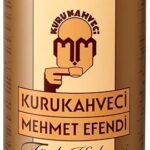Are you a coffee lover who enjoys the beauty of latte art but struggles to master the technique yourself? You’re not alone! In this blog post, we’ll dive into the world of latte art and address common mistakes that often trip up baristas. From poor milk texturing to shaky hand movements, we understand the frustration you may feel. But fear not! By the end of this post, you’ll have the knowledge and tips to fix these mistakes and elevate your latte art skills to a whole new level. Let’s turn those foamy mishaps into picture-perfect creations!
Pouring Technique
When it comes to creating latte art, mastering the pouring technique is essential. Pouring the steamed milk in a controlled, precise manner is what brings your design to life and gives your latte that professional finish.
Importance of Proper Pouring Technique
Proper pouring technique is crucial for achieving intricate latte art designs. Here’s why it matters:
- Control: The way you pour the milk determines the shape and detail of your design.
- Consistency: A steady pour ensures even distribution of the milk, creating a uniform canvas for your art.
- Texture: The right pouring technique helps maintain the silky texture of the milk, essential for creating smooth lines and patterns.
Common Mistakes to Avoid
Avoid these common pouring mistakes that can hinder your latte art creation:
- Pouring Too Fast: Rapid pouring can cause the milk to splash and disrupt the design.
- Pouring Too Slow: Pouring too slowly may result in the milk sinking too deep into the espresso, making it challenging to create defined shapes.
- Inconsistent Flow: Uneven pouring can lead to irregular patterns and distortions in your design.
Tips for Achieving the Perfect Pour
Here are some tips to help you master the art of pouring for beautiful latte art:
- Use a Spouted Pitcher: A high-quality spouted pitcher, like the Espro Toroid or the Rattleware Latte Art Pitcher, can provide better control and precision while pouring.
- Maintain Steady Hand Movements: Keep your hand steady and maintain a consistent flow of milk throughout the pour.
- Practice: Like any skill, practice makes perfect. Experiment with different pour speeds and movements to find what works best for you.
- Watch Tutorials: There are plenty of online tutorials that demonstrate various pouring techniques. Watching experts in action can help you refine your skills.
Common Milk Frothing Issues and How to Overcome Them
Overheating Milk
When frothing milk, it is crucial to ensure that you do not overheat it, as this can lead to a burnt taste and ruin the texture of the foam. To avoid overheating, consider using a thermometer specifically designed for milk frothing. One popular option is the Breville Milk Cafe, which comes with a built-in temperature sensor to help you achieve the ideal frothing temperature without overheating.
Under-Frothing
Under-frothing can result in thin, watery foam that lacks the desired creamy texture. To achieve perfectly frothed milk, consider investing in a high-quality frother like the Nespresso Aeroccino 4, known for its ability to create rich and velvety microfoam consistently. Experiment with different frothing techniques and milk types to find the optimal balance between frothiness and creaminess.
Large Bubbles Disrupting Latte Art
Creating large bubbles while frothing milk can make it challenging to pour latte art smoothly. To avoid this issue, opt for a frother with a fine mesh steam wand, such as the Gaggia Classic Pro Espresso Machine. This steam wand produces microfoam with tiny bubbles, making it easier to create intricate latte designs without disruptions.
Achieving Velvety Microfoam: A Step-by-Step Guide
- Start with cold, fresh milk to ensure better frothing results.
- Fill your frothing pitcher with the desired amount of milk, keeping in mind that the milk will expand during frothing.
- Position the steam wand tip just below the surface of the milk and turn on the steam function.
- Froth the milk using a circular motion to incorporate air evenly and create a smooth, velvety texture.
- Monitor the temperature with a thermometer and stop frothing once it reaches the ideal range (usually between 140-160°F).
- Tap the frothing pitcher on a flat surface to eliminate any large bubbles and swirl the milk gently to achieve a silky microfoam consistency.
Choosing the Right Milk Frothing Equipment
When selecting a milk frother, consider the following factors to ensure optimal frothing performance:
- Frothing Capacity: Choose a frother that can accommodate the amount of milk you typically use for your coffee creations.
- Temperature Control: Look for frothers with adjustable temperature settings to prevent overheating.
- Steam Wand Design: Opt for frothers with steam wands that produce fine microfoam for latte art precision.
- Ease of Cleaning: Select frothers with detachable components for easy cleaning and maintenance.
By mastering milk frothing techniques and selecting the right equipment, you can elevate your coffee experience and create barista-quality beverages in the comfort of your home. Experiment with different frothing methods and products to discover the perfect combination that suits your preferences and coffee style.
Espresso Extraction
Espresso extraction is a crucial step in creating the perfect base for latte art. The quality of espresso extraction directly affects the taste, texture, and appearance of the espresso, which in turn influences the final latte art design. In this blog post, we will explore how various factors during espresso extraction can impact latte art and discuss solutions to ensure a balanced espresso base for stunning latte art creations.
Factors Affecting Latte Art
Inconsistent Shots
Inconsistent espresso shots can result from variations in grind size, tamping pressure, or machine calibration. This inconsistency can lead to a lack of crema, uneven extraction, and ultimately affect the ability to create intricate latte art designs.
Over-extraction
Over-extraction occurs when too much water is forced through the coffee grounds, resulting in a bitter, astringent flavor. Over-extracted espresso lacks the sweetness and body necessary for creating contrasting layers in latte art patterns.
Under-extraction
Conversely, under-extraction happens when insufficient water passes through the coffee grounds, leading to a sour, acidic taste. Under-extracted espresso lacks the depth and richness needed to complement milk in latte art designs.
Solutions for Balanced Espresso Extraction
To achieve consistent, balanced espresso extraction for optimal latte art, consider the following solutions:
- Use a high-quality espresso machine like the Breville Barista Express with precise temperature control and pressure settings.
- Invest in a quality burr grinder such as the Baratza Virtuoso+ to ensure uniform particle size for even extraction.
- Regularly calibrate your espresso machine to maintain accurate water temperature and pressure.
- Experiment with different coffee blends and roast profiles to find the perfect balance of flavor for your latte art creations.
Tools and Equipment
When it comes to creating beautiful latte art, having the right tools and equipment is crucial. From the type of steam wand to the milk jug you use, every element plays a significant role in achieving the perfect pour. In this blog section, we will delve into the importance of using the right tools and equipment for latte art, common mistakes to avoid, and recommendations for enhancing your setup.
Significance of Using the Right Tools
Using the right tools and equipment can make a world of difference in your latte art journey. Here are some key reasons why it is essential:
- Consistency: High-quality tools ensure consistent results, allowing you to replicate your favorite designs with precision.
- Efficiency: The right tools can help you work more efficiently, saving time and effort in the process.
- Professionalism: Using professional-grade equipment can elevate the quality of your latte art, making your creations stand out.
Common Mistakes to Avoid
Many latte art enthusiasts fall into the trap of using outdated or improper tools and equipment, hindering their progress. Here are some common mistakes to steer clear of:
- Outdated Steam Wands: Using a steam wand that lacks power or precision can lead to poorly textured milk, resulting in subpar latte art.
- Improper Milk Jugs: Choosing the wrong milk jug size or shape can make it challenging to pour intricate designs, limiting your artistic potential.
Recommendations for Enhancing Your Setup
To take your latte art to the next level, consider the following recommendations for enhancing your setup:
- Steam Wand Upgrade: Investing in a high-quality steam wand, such as the Breville Smart Steam Wand, can improve the texture and consistency of your milk, enabling you to create finer details in your latte art.
- Specialized Milk Jug: Opt for a specialized milk jug, like the Fellow Eddy Steaming Pitcher, designed for latte art. Its tapered spout and ergonomic handle make it easier to control the pour, resulting in more intricate designs.
Perfecting Your Latte Art Skills
In conclusion, by recognizing and correcting common latte art mistakes such as improper milk steaming or poor pouring technique, baristas can enhance their latte art skills. By following the solutions provided in the blog post, you can create visually stunning designs with confidence. Remember to practice consistently and pay attention to detail to achieve latte art perfection. Elevate your latte art game, impress your customers, and enjoy the process of creating beautiful coffee creations.





